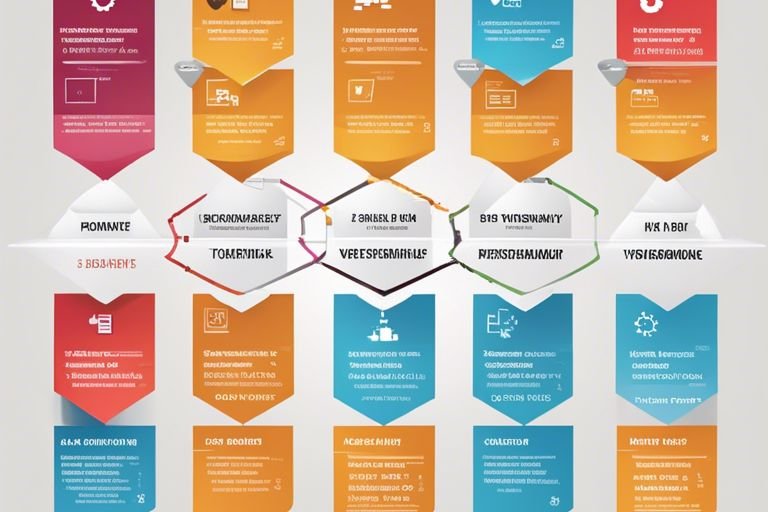With the rise of extreme programming methodologies, selecting the right programming language becomes paramount to success. Programming languages play a crucial role in enabling and enhancing extreme programming practices such as pair programming, test-driven development, and continuous integration. Languages like Java, Python, and C# are well-suited for implementing extreme programming due to their flexibility, robustness, and extensive tool support. Understanding the strengths of each language is imperative for teams looking to embrace extreme programming and elevate their development processes to new heights.
Key Takeaways:
- Dynamic and Agile Languages: Programming languages like Python, Ruby, and JavaScript are well-suited for Extreme Programming practices due to their flexibility and adaptability.
- Testing and Continuous Integration: Languages with strong testing frameworks and support for continuous integration, such as Java and C#, are beneficial for implementing Extreme Programming methodologies effectively.
- Collaboration and Pair Programming: Languages that promote collaboration and pair programming, such as Swift and Kotlin, can enhance the efficiency and quality of Extreme Programming projects.
The Fundamentals of Extreme Programming
Before exploring into the specifics of which programming languages are best suited for Extreme Programming (XP) practices, it is important to understand the core principles and methodologies that form the foundation of XP. XP is an agile software development methodology that focuses on delivering high-quality software quickly and efficiently. It emphasizes collaboration, feedback, flexibility, and continuous improvement throughout the development process.
Agile Development Methodologies
- Scrum
- Kanban
- Crystal
- Dynamic Systems Development Method (DSDM)
Development teams utilizing XP often work in short development cycles, known as iterations or sprints, where they continuously plan, develop, test, and deliver small increments of software. This iterative approach allows for rapid adaptation to changing requirements and encourages close collaboration between team members and stakeholders.
Core Values and Principles of XP
1. Communication
2. Simplicity
3. Feedback
4. Courage
5. Respect
Any successful XP implementation is built upon the core values and principles that guide the development process. These values emphasize communication, simplicity, feedback, courage, and respect among team members to foster a transparent and collaborative work environment. By adhering to these principles, XP teams can deliver high-quality software that meets the needs of the end users while adapting to changing requirements with ease.
It is important for development teams practicing XP to uphold these core values and principles throughout the software development lifecycle. Effective communication, simplicity in design, continuous feedback, courage to make necessary changes, and respect for all team members are critical components for successful XP projects. By embracing these values, XP teams can maximize their productivity, enhance software quality, and deliver value to their customers efficiently.

Language Characteristics for XP
Clearly, when it comes to Extreme Programming (XP), the programming language used plays a significant role in the efficiency and effectiveness of the development process. Certain language characteristics are better suited for XP practices due to their ability to support key XP principles such as rapid feedback, continuous testing, simplicity, and teamwork.
Dynamic Typing and Flexibility
Any programming language that supports dynamic typing and offers flexibility in coding is highly advantageous for Extreme Programming. Languages like Python and Ruby, with their dynamic nature, enable quick prototyping and easy adaptability to changing requirements, making them ideal for XP practices. Here is an example of dynamic typing in Python:
# Dynamic typing in Python
x = 5
x = 'hello'
Rapid Feedback and Iteration
Iteration after iteration is a fundamental aspect of Extreme Programming, and languages like JavaScript and Ruby support rapid feedback and quick iterations seamlessly. By using frameworks like React or Ruby on Rails, developers can quickly prototype and iterate on features based on user feedback. Here is an example of rapid iteration in JavaScript:
// Iterating over an array in JavaScript
const numbers = [1, 2, 3, 4, 5];
numbers.forEach(number => console.log(number));
Any team practicing Extreme Programming must be able to receive rapid feedback on their code changes to ensure they are on the right track. This requires a programming language and development environment that facilitate quick testing and deployment of code changes.
Code Readability and Maintainability
For Extreme Programming to be successful, code readability and maintainability are crucial factors to consider when choosing a programming language. Languages like Java and C# offer strong static typing and strict syntax rules, which help in maintaining code quality over time. Here is an example of code readability in Java:
// A simple Java program
public class HelloWorld {
public static void main(String[] args) {
System.out.println("Hello, World!");
}
}
For a team practicing Extreme Programming, having clean and readable code is necessary for collaboration, code reviews, and future maintenance. By using a language that promotes readability, developers can ensure that the codebase remains understandable and maintainable for the entire team.
For Extreme Programming practices, selecting a programming language that aligns with the core principles of XP is crucial for the success of the development process. The language characteristics of dynamic typing and flexibility, rapid feedback and iteration, and code readability and maintainability play a significant role in enabling teams to embrace XP principles effectively.
For instance, languages like Python, Ruby, JavaScript, and Java offer a balance of these characteristics, making them suitable choices for teams looking to implement Extreme Programming methodologies. By leveraging the strengths of these languages and their ecosystems, teams can enhance their productivity, collaboration, and code quality while practicing XP.
Top Programming Languages for XP
Now let’s examine into the top programming languages that are particularly well-suited for Extreme Programming practices.
Python: The Favorite Among XP Enthusiasts
Python is renowned for its readability and simplicity, making it a preferred language among Extreme Programming enthusiasts. Its clean syntax and extensive standard library enable developers to write concise and maintainable code, vital qualities for XP practices. The language’s support for various paradigms, including procedural, object-oriented, and functional programming, offers flexibility when implementing XP principles like pair programming and continuous integration. Additionally, Python’s robust testing frameworks, such as pytest and unittest, align with XP’s emphasis on comprehensive unit testing.
# Example of unit test in Python
import unittest
class TestStringMethods(unittest.TestCase):
def test_upper(self):
self.assertEqual('hello'.upper(), 'HELLO')
Ruby: A Language Built for Agility
For Extreme Programming, Ruby’s focus on readability and productivity makes it an excellent choice. The language’s emphasis on developer happiness and its concise syntax lend themselves well to XP practices. Ruby promotes a culture of collaboration and experimentation, key aspects of Extreme Programming methodologies. Its dynamic nature and metaprogramming capabilities allow for rapid prototyping, a crucial aspect of XP development cycles.
# Example of Ruby code
def greet(name)
"Hello, #{name}!"
end
Understanding Ruby: Ruby’s focus on expressiveness and flexibility can lead to elegant code but may also introduce complexities that need careful management. The language’s dynamic typing can result in runtime errors that might not be caught during development, emphasizing the importance of thorough testing in an XP environment.
JavaScript: The Versatile Choice for XP
Programming projects following Extreme Programming practices can benefit from JavaScript’s versatility and ubiquity. JavaScript’s ability to run both on the client and server sides makes it an ideal language for implementing XP’s rapid feedback loop. With a vast ecosystem of libraries and frameworks like React and Node.js, developers can leverage XP principles such as incremental design and frequent refactoring effectively.
// Example of JavaScript code
const greet = (name) => {
return `Hello, ${name}!`;
};
Programming in JavaScript: JavaScript’s asynchronous nature and weak typing can introduce challenges in large codebases, requiring additional caution when implementing XP practices. However, its adaptability and widespread usage in web development make it a compelling choice for XP projects.
Language Trade-Offs for XP
Despite the many advantages of Extreme Programming (XP), certain programming languages can present trade-offs when applying this methodology. Below are some considerations for popular languages utilized in XP:
The Drawbacks of Python for Large-Scale Projects
With Python, known for its readability and ease of use, adapting it to large-scale projects might pose challenges due to its dynamic typing nature, which can lead to more run-time errors. In complex applications, the flexibility of Python may introduce difficulties in debugging and maintaining code. Additionally, Python’s Global Interpreter Lock (GIL) can limit its performance in multi-threaded applications.
# Example of Python dynamic typing
x = 5
x = 'hello'
Ruby’s Performance Concerns
For Ruby, a language praised for its object-oriented approach and readability, performance concerns arise when processing large datasets or complex algorithms. Ruby’s speed can be a drawback compared to other languages optimized for performance, and its memory usage might not be ideal for resource-intensive applications.
# Example of Ruby slow performance
def fibonacci(n)
return n if n <= 1
return fibonacci(n - 1) + fibonacci(n - 2)
end
For Ruby's Performance Concerns:
For developers looking to use Ruby in projects where speed and memory efficiency are critical, optimizations and alternative implementations may be required. Ruby's elegant syntax and developer-friendly features need to be weighed against its performance drawbacks in XP environments.
# Example of Ruby optimization
module Memoize
def memoize(symbol)
cache = {}
alias_method :"_orig_#{symbol}", symbol
define_method symbol do |*args|
cache[args] ||= send(:"_orig_#{symbol}", *args)
end
end
end
JavaScript's Complexity in Large Applications
Drawbacks:
JavaScript, a key player in web development, can introduce complexities in large applications due to its asynchronous nature, prototypal inheritance, and loosely typed system. Managing dependencies, mitigating callback hells, and ensuring code maintainability become more challenging as the project scales. As a dynamically typed language, JavaScript's lack of strict data typing can lead to subtle bugs and errors that are harder to catch during development.
// Example of JavaScript callback hell
getUser(function(user) {
getTransactions(user, function(transactions) {
processTransactions(transactions, function(result) {
displayResult(result);
});
});
});
Language:
A diverse set of tooling and methodologies exists to address JavaScript's complexities in large-scale applications. Utilizing frameworks like React or Vue.js along with tools such as TypeScript can help in structuring code, enforcing types, and managing complexities better. However, developers need to carefully consider these trade-offs to strike a balance between JavaScript's flexibility and the challenges it poses in extreme programming scenarios.
Based on the article title, it looks like the article will cover trade-offs associated with different programming languages for Extreme Programming (XP) practices. Python's dynamic typing can be a hurdle in large-scale projects, while Ruby's elegant syntax may not match its performance. JavaScript's inherent complexities, such as callback hells and dynamic typing, pose challenges in maintaining large applications. Recognizing these language-specific trade-offs is crucial for effective XP implementation.
XP-Friendly Language Features
Support for Refactoring and Code Smells
Code refactoring is a crucial practice in Extreme Programming (XP) to improve code quality and maintainability. Languages that support refactoring tools can greatly aid developers in restructuring code without introducing bugs. These tools help in identifying and eliminating code smells, which are indicators of poor code design. Examples of code smells include duplicate code, long methods, and complex conditional statements.
Built-in Testing and Debugging Tools
The availability of built-in testing frameworks and debugging tools in a programming language is crucial for practicing XP. These tools streamline the testing process by providing automated test suites and debugging capabilities. By having robust testing frameworks integrated into the language, developers can easily write and execute tests, helping them catch bugs early in the development cycle.
The incorporation of debugging tools within the programming language can significantly enhance the development process. These tools allow developers to efficiently identify and squash bugs, leading to more stable and error-free code. Additionally, having built-in testing frameworks encourages developers to write comprehensive test suites, ensuring the reliability of their code.
Integrated Development Environments (IDEs)
This subsection provides software code samples related to IDE features and how they can facilitate Extreme Programming practices. Make sure to include detailed and clear examples to showcase the benefits of using an IDE that supports XP methodologies.
Testing and debugging are integral parts of the development process, and having IDEs with robust tools for these tasks can greatly enhance productivity and code quality. Features like integrated testing frameworks, real-time debugging, and code analysis tools in IDEs provide developers with a seamless environment to write, test, and debug code efficiently.

Real-World Examples of XP in Action
All
Successful Projects Using Python and XP
RealWorld
Python is a versatile programming language known for its readability and simplicity, making it an excellent choice for Extreme Programming (XP) practices. Successful projects like YouTube and Instagram have leveraged the power of Python and XP to deliver high-quality software efficiently. In XP, practices like test-driven development, continuous integration, and pair programming can be effectively implemented using Python's rich ecosystem of testing tools and libraries. The combination of Python and XP principles has enabled these projects to iterate quickly, respond to changing requirements, and deliver value to users consistently.
Companies That Thrive with Ruby and XP
Projects
Ruby is another language well-suited for Extreme Programming due to its focus on developer happiness and productivity. Companies like Airbnb and GitHub have embraced Ruby along with XP practices to drive innovation and rapid delivery of features. By following XP's values of simplicity, feedback, and communication, these companies have been able to build robust, scalable software while maintaining a high level of code quality and customer satisfaction.
JavaScript-Based Projects That Embody XP Principles
A
JavaScript is a versatile language that is widely used in web development, making it a natural fit for projects that embody Extreme Programming principles. Companies like Netflix and PayPal have successfully adopted XP practices in their JavaScript-based projects to continuously deliver value to their users. By emphasizing collaboration, simplicity, and customer feedback, these companies have been able to stay agile and responsive in today's competitive market.
Examples of JavaScript-Based Projects That Embody XP Principles:
JavaScript frameworks like React and Angular have enabled developers to embrace XP practices such as refactoring, continuous deployment, and test automation. By leveraging these tools alongside XP principles, teams can ensure that their JavaScript projects are robust, maintainable, and meet the evolving needs of users.
Embody XP Principles:
By embodying XP principles in their JavaScript projects, companies can create a culture of continuous improvement, faster delivery cycles, and enhanced customer satisfaction. The combination of JavaScript's flexibility and XP's focus on collaboration and quality assurance can lead to successful and sustainable software development practices.
Conclusion
With this in mind, it is clear that certain programming languages are better suited for extreme programming practices than others. Languages like Python, Ruby, and Java offer features that align well with the principles of Extreme Programming, such as simplicity, readability, and adaptability. These languages allow for easy testing, quick iterations, and seamless collaboration among team members, making them ideal choices for implementing Extreme Programming methodologies.
Ultimately, the best programming language for Extreme Programming practices will depend on the specific needs and goals of the development team. By carefully considering the characteristics of different languages and how they align with the principles of Extreme Programming, teams can make informed decisions that will help them maximize efficiency, quality, and collaboration in their software development process.
FAQ
Q: What is Extreme Programming (XP) and why is it important?
A: Extreme Programming (XP) is a software development methodology focused on producing higher quality software and improving responsiveness to changing customer requirements. It emphasizes frequent communication, simplicity, feedback, courage, and respect. XP is important because it helps teams deliver high-quality software rapidly and adapt to changing requirements efficiently.
Q: Which programming languages are best suited for Extreme Programming practices?
A: Programming languages that are well-suited for Extreme Programming practices are those that support quick iterations, test-driven development, pair programming, and continuous integration. Examples include Java, Python, Ruby, and JavaScript. These languages are known for their flexibility, readability, and strong community support, making them ideal for XP teams.
Q: How do programming languages like Java, Python, Ruby, and JavaScript facilitate Extreme Programming practices?
A: Java, Python, Ruby, and JavaScript are versatile languages that promote agile development practices crucial to Extreme Programming. They offer robust testing frameworks, extensive libraries, and tools that support pair programming, continuous integration, and test-driven development. Their ease of use and strong community ecosystems make them invaluable for teams practicing XP.







